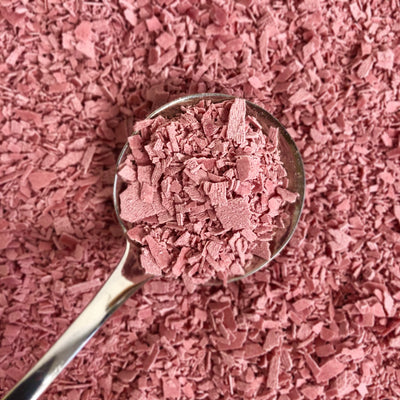How does the Queen take her tea?
Have you ever wondered what Her Majesty Queen Elizabeth II drinks in the morning for breakfast?
Does she sample a wee dram to help her cope with the troublesome grand kids, savour a full-on Guatemalan Coban to really kick off the morning or go with something less complex in the form of a good old cuppa?
According to first hand accounts the Queen is partial to a good cup of a tea.
But let’s kick things off with what’s probably one of the most hotly debated topics amongst tea lovers.
DOES THE QUEEN PUT THE MILK IN FIRST?
According to Grant Harold, the Queen’s former butler, the answer is no.
The royal family always add their milk last.
This comes from a tradition from the 18th century. The ‘royal way’ to brew tea is to pour the tea before the milk.

(Image by @briantagalog on Unsplash: https://unsplash.com/photos/oLJSa1fUHTE)
IS IT MILK OR TEA FIRST?
While her Majesty is very much in the milk last camp you might be wondering why.
You see the origins of the royal family’s pouring tea before milk has a simple explanation and it’s one that relates to status and ability to afford quality China.
Modern Bone China was developed by Staffordshire potter Josiah Spode in the early 1790’s, he included kaolin in his mix, this resulted in a harder more durable ceramics, which didn’t shatter when boiling water was poured into them. So those that could afford this new form of Bone China could smugly pour their tea and then add their milk, those that couldn’t afford this higher quality product poured their milk first, followed by their tea to stop their cups exploding!
Sadly, this simple explanation isn’t particularly glamorous and no doubt the debate will continue amongst tea fanatics.
HOW DOES THE QUEEN TAKE HER TEA?
As it goes her Majesty loves nothing better than a cup of tea to start her day off right and her all-time favourite is a refreshing drop of Earl Grey with a splash of milk and no sugar.
Before you ask, according to her former butler Grant Harold, she’s a stickler for tradition. The Queen drinks loose leaf tea, which once it’s brewed is poured through a strainer into a bone china cup, before a splash of milk is added. We understand the Queen also enjoys Assam.
We’re pretty confident that her Majesty would enjoy our Earl Grey and Assam blends. Handily you can pick up some to try yourself in loose leaf or tea bag format (if you prefer), which you can find on our website.

(Image by @dbmartin00 on Unsplash: https://unsplash.com/photos/J6Shwtc8hXY)
HOW IS TEA PREPARED FOR THE QUEEN?
Her former butler also revealed the steps to prepare a royal cup of tea.
1) Pour the tea into the cup from a teapot.
2) Add milk to the cup after the tea and never before.
3) Stirring backwards and forwards (never in a circular motion, one should never touch the sides of the cup).
4) Always sip, one should never slurp.

DOES THE QUEEN MAKE HER OWN TEA?
Well interestingly, despite having a household of staff Her Majesty is no stranger to making a cup of tea herself. According to Kevin Andrews, the royal upholsterer, she once made a workman a cup of tea.
Reportedly the workman was in the middle of dismantling a desk in Buckingham Palace when a ‘well-spoken woman’ asked if he wanted a cup of tea. The workman said, “Yeah, in a mug. Two sugars. Builders’ tea. I don’t want any of that nonsense I had the last time I was here, all that fine china and all that saucer stuff.”
The well-spoken woman came back later and said “I’ve put your tea on the table here.” The workman looked up and saw the Queen leaving the room!

WHO INVENTED EARL GREY TEA?
Earl Grey tea originates from Charles Grey. A high-born member of the English aristocracy, who became an MP at the age 22, and became an Earl when after his father’s passing in 1807. This elevated him to the House of Lords. As the Second Earl Grey, as he was now titled, became Prime Minister from 1830 until 1834. During that time, he oversaw the 1832 Reform Act and the 1833 Slavery Abolition Act and removed the total monopoly of the East India Company governing the UK’s trade with China. Although this probably has nothing to do with the naming of the tea, indeed nobody really knows how it came to be named ‘Earl Grey’.
We do know if was first referenced in tea catalogues in 1824, which may mean one fanciful story could fit the bill… the story goes the First Earl Grey sent an envoy to China, during his travels he saved the life of a Mandarin’s son. As a reward, the Mandarin ordered the creation of a unique blend of tea, which the envoy was tasked with bringing back to the Earl, along with the recipe to create future batches. But tea historians found a glaring issue of this account, as it doesn’t explain the addition of Italian Bergamot orange peel, which wasn’t found in China at the time!
The sad reality is that unscrupulous tea merchants at the time took to disguising low quality teas with the addition of flavourings to lift their prices. The most expensive China tea available at the time was a green tea called ‘Fo Shou’ often referred to Bergamot tea because of its underlying aroma, sadly it’s likely that this is the reality of Earl Grey.
INSPIRED TO TRY LOOSE LEAF TEA AND ENJOY A CUPPA LIKE THE QUEEN?
Check out our selection of loose leaf tea on our webshop.
EXPLORE FARRER’S LOOSE LEAF TEA





